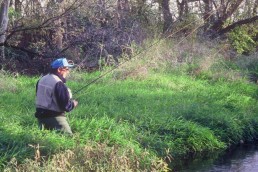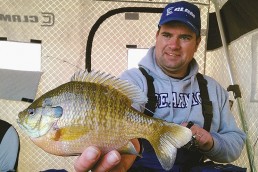Rough Fish are Too Often Overlooked as Table Fare
SHARE THIS POST
Carp, gar, bowfin, drum and a few other species are considered rough fish. Don’t mistake these species as “trash fish,” as some mistakenly do. These fish are fun to catch on a rod and reel and offer bow fishers an opportunity to stretch strings all year long. Contrary to what many believe, rough fish can also make excellent table fare when properly prepared.
Rough fish have their place. They clean bottom debris. However, when populations become too high, rough fish can negatively impact sport fish. Carp destroy nesting areas and will devour prized eggs. Too many gar can hurt the population of gamefish. As for Asian carp, they are completely undesirable and all need to go away.
Bow fishing is a popular method for taking rough fish—especially those difficult to catch on a hook. Many bow fishers discard the fish they shoot. Some turn them into fertilizer. You don’t hear of too many taking them home and processing the fish for food.
John Rittel is a community education assistant with the Missouri Department of Conservation (MDC). He’s a fan of processing rough fish and eating them. “I fillet the fish and remove any red meat,” Rittel said. “Gar, buffalo and drum don’t have much red meat, though. Common and grass carp do. Most of these fish, particularly our native rough fish, actually taste really good. However, most of them get a bad rap because their meat has some intricate Y bones that need to be removed. People don’t know how to do that, so their fillets end up being bony. I show participants how to remove those bones so that they are left with excellent quality, large, boneless filets.”
Rough fish have more bones than most popular table fare fish, but with a little extra preparation during cleaning and the right recipes, make a fine meal. Removing the bones with a knife is an option, but so is scoring them. Many who gig suckers will run fillets through a machine that slices through the bones, making them so small they dissolve when frying.
Are you enjoying this post?
You can be among the first to get the latest info on where to go, what to use and how to use it!
“Gar have excellent, flakey white meat with a mild flavor and firm texture,” Rittel said. “Their drawback is their tough, armored skin. Most people don’t know how to remove that skin, so they can’t get through it to fillet the fish.”
There is more than one method for getting through and removing that tough hide. Using tin snips and pliers is a proven tactic. Snip the skin, then pull with pliers. Once the skin is removed, filleting gar is like filleting any other fish.
“Gar grilled in a foil pan of butter is hard to beat,” Rittel said. “It’s good deep fried, too. Some people prefer to fillet their gar and leave the tough skin on the fillet. Then they grill it skin-side-down topped with butter and seasoning. The skin forms a bit of a dish that keeps the meat basting in the butter. The skin easily peels off, though, once the fish is done cooking. Buffalo fillets and ribs are both very good fried, but we’ll also grill some buffalo ribs. Buffalo have extremely large rib bones—much heavier than any other fish.”
You usually get a lot of meat off rough fish because they grow so large. Buffalo in the 15- to 20-pound range and gar 3- to 4-feet long are common. Carp often reach 20 pounds or more. Drum don’t usually grow as large but are caught opportunistically by crappie and walleye anglers. All can make good table fare when prepared well.
“I like to season most all of my fish with a Cajun-type seasoning; however, these fish don’t have a flavor that needs to be hidden,” Rittel said. “Salt, pepper and a bit of garlic powder will do just fine.”
The next time you find yourself in possession of a rough fish, consider giving it a chance on the dinner table. Experiment with different ways of cooking the meat, and chances are you’ll find a way to make it tasty.
As past executive director of the Conservation Federation of Missouri, Brandon Butler has made a name for himself by fighting to protect fish and wildlife, and critical habitats. His syndicated column, “Driftwood Outdoors,” appears in more than 30 newspapers, weekly, across Missouri and Indiana. Reach him via email at bbutler@driftwoodoutdoors.com. For more Driftwood Outdoors, check out the podcast on www.driftwoodoutdoors.com or anywhere podcasts are streamed.
MWO
SHARE THIS POST
Did you enjoy this post?
You can be among the first to get the latest info on where to go, what to use and how to use it!
Brandon Butler
As past executive director of the Conservation Federation of Missouri, Brandon Butler has made a name for himself by fighting to protect fish and wildlife, and critical habitats. His syndicated column, “Driftwood Outdoors,” appears in more than 30 newspapers, weekly, across Missouri and Indiana. Reach him via email at bbutler@driftwoodoutdoors.com.



